When working on a fabric collage, you will almost certainly, sooner or later, enter the Messy-Scary Stage, or the M-SS.
You won’t be able to say I didn’t warn you. If you’re in a class, it’s right there in my presentation on Day One of the class (sometimes on Day Two if I get distracted). I show you samples of my partially done samples and tell you: “At the end of the day, or maybe sometime tomorrow, you will enter the Messy-Scary Stage. You will think yourself: Why am I here? What have I done? How will I ever be able to make this piece look like anything recognizable? Do I have to come to class tomorrow?”
Then I say: “You will enter the M-SS, but you have to believe me, you will get through it. Regardless of what your mind tells you, you have to have faith and trust me that you will get through it. And most importantly, yes, you do have to come to class tomorrow!”
This last part usually elicits a polite chuckle. Then they wake up the next morning with a feeling of dread…
No, not always, but more often than you’d think, and those are the students that really need to know it’s okay to feel that way, it’ll get better.
Below are the samples I show in class. Because they are in the first drafts of the fabric collage process, they make for good examples of the Messy-Scary Stage.
What exactly is the Messy-Scary Stage?
It’s when you’ve started your fabric collage, but it’s still early on, you have some fabric pieces down, but nothing seems to be holding together. (If you’re working on your own rather than in class you may be proceeding more slowly and thus hit the M-SS later.) It isn’t gelling and you don’t have any confidence that it ever will gel.
It happens to almost everyone, including me. Well, to be honest, I have enough experience now that I can usually skip the “scary” part and trust in the process, but it sure does look messy.
Here’s a couple photos of my semi-recent quilt “Kissin’ Cousins,” a dual portrait of my son and niece as toddlers. Looks pretty messy to me in photo above. But I know that if I just keep at it, piece-by-piece the quilt will come together, below.
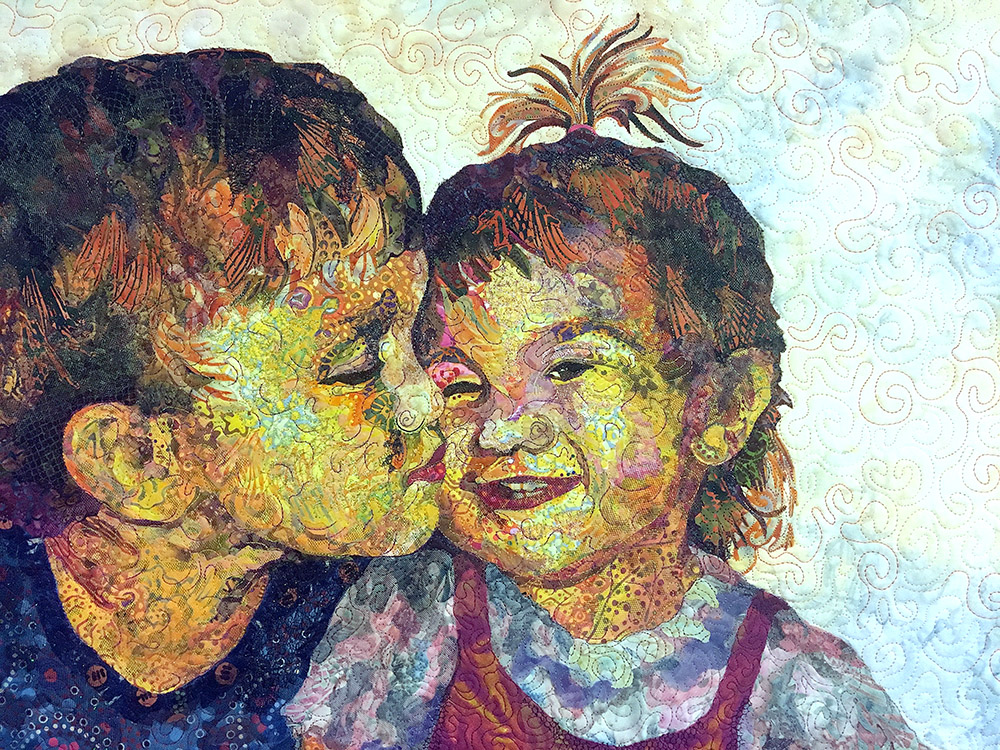
To try to help allay my students’ fears on that first day, I read three paragraphs to them from a book called “Bird by Bird” by Anne Lamott. While she mostly talks about writing, I find her advice useful and inspiring for just about any type of art. One analogy she uses is headlights on a car. Your headlights, she says, can only cast light a short distance down the road, but by following them—even if you don’t know where you’re going—you can complete your journey. For more about “Bird by Bird” and how I use it as a teaching tool, read this blog post.
My students sometimes come up with variations on the Messy-Scary Stage. When I come around to them on Day 2, they tell me they have entered the “messy terrible stage” or the “awful scary stage” or the “gruesome gross stage.” But having forewarned them I think helps, for many of them treat this admission with exasperated humor. They know that this isn’t some sort of personal failing on their part, they just have to keep working to get through it.
Here’s another example of the M-SS from my work. This one looks particularly messy because of the method I chose to work. In “Not-So-Goldfish” I used only scraps of fabrics from previous quilts. The “patchy” look comes from using those scraps almost exactly as I pulled them from my stash.
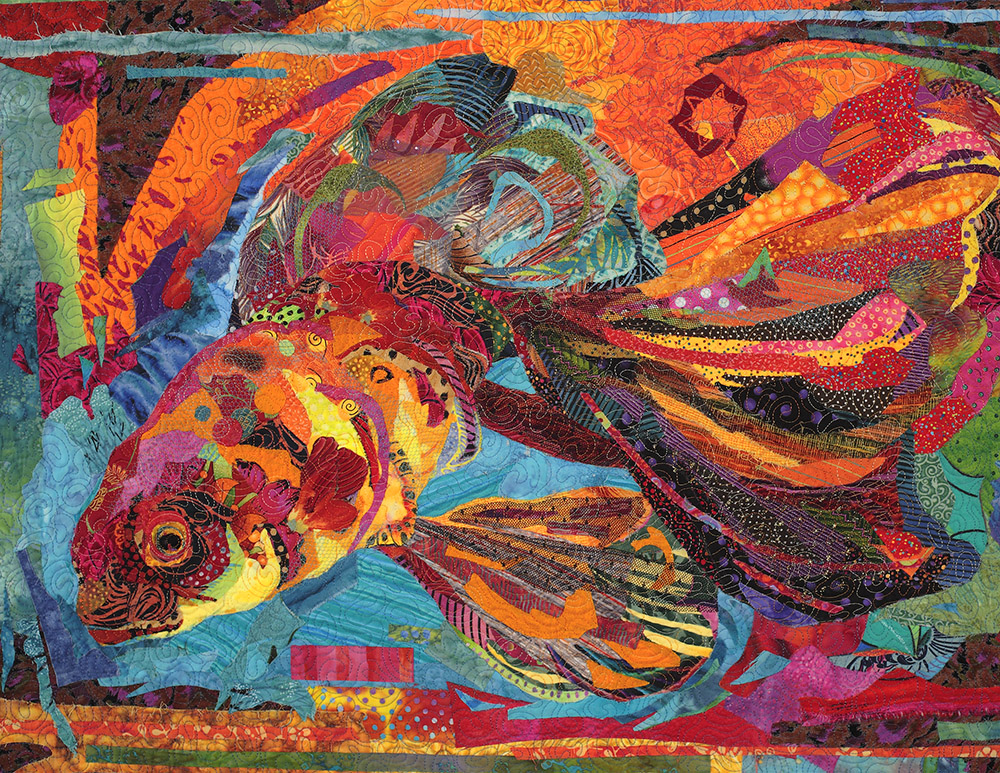
You need to be sure you don’t get paralyzed by the M-SS. It’s important to keep your momentum moving forward. Stopping won’t help. Lamott refers to stages of assembly as “drafts” because she’s a writer, but I think the analogy works for visual artists as well. She says you have a down draft and then an up draft. You have to put something (anything) down before you can fix it up. In fabric collage, you have to put those pieces of fabric down onto the foundation fabric, before there’s anything to look at to fix up.
The collage below also uses the scrap fabric approach, “Samuelsaurus Rex,” a portrait of my then 3 year old son Sam.
I’m a bit all over the place in that first draft. When teaching I generally encourage students to finish an area before moving onto another—it’s easier and quicker to show progress that way. In this case, I was pulling fabrics out of my bin of scraps rather at random and placing them down according to their value and shape. If I was being more organized about it, I may have started with the area “closest” to the viewer, say the tip of the nose or even the hands, and worked “backward” from there, to the mouth and eyes.

Even when I’m not using scraps, my pieces invariably (with a rare exception) pass through the messy stage. The portrait of our dog Kali, from “Golden Temple of the Good Girls” (below) was no exception. I’m sure it was also a bit scary to see for my husband Tom—what was I doing to his dog?!
I have to have faith (and experience) to believe that the M-SS above will be transformed into this:
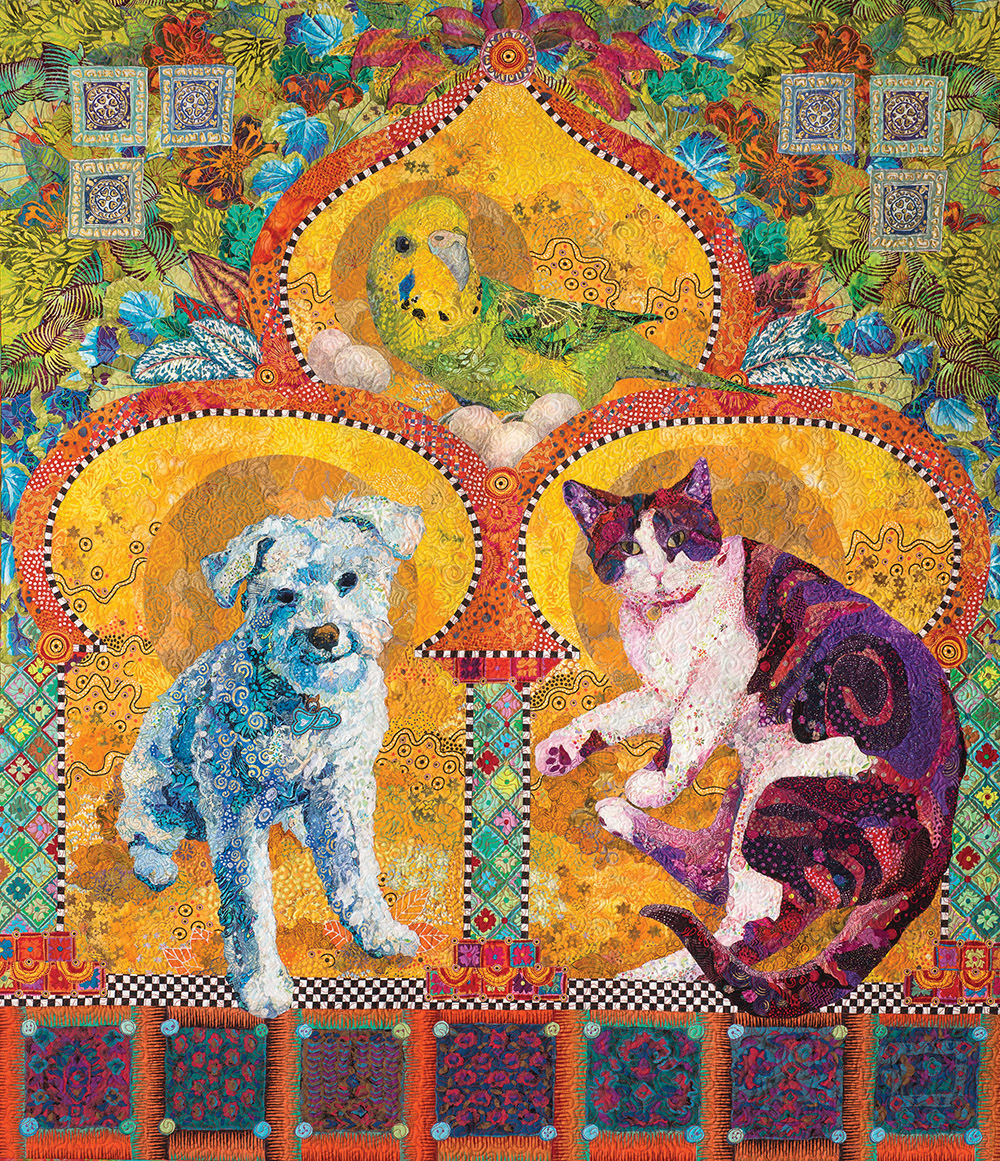
In the following quilt I had to face the M-SS four times before it was done. In this portrait of my (then 13 year old) son, “Peace, Love, Tie-dye, Save the Whales,” I repeated the same image, but with four different color ways. Each time I had remember that while it might not look like much early on, I just needed to keep going and trust myself. A mostly-completed “Save the Whales” quarter of the quilt appears in the upper left of my workboard as I continue on the “Love” section (another M-SS photo is at the very beginning of this post).
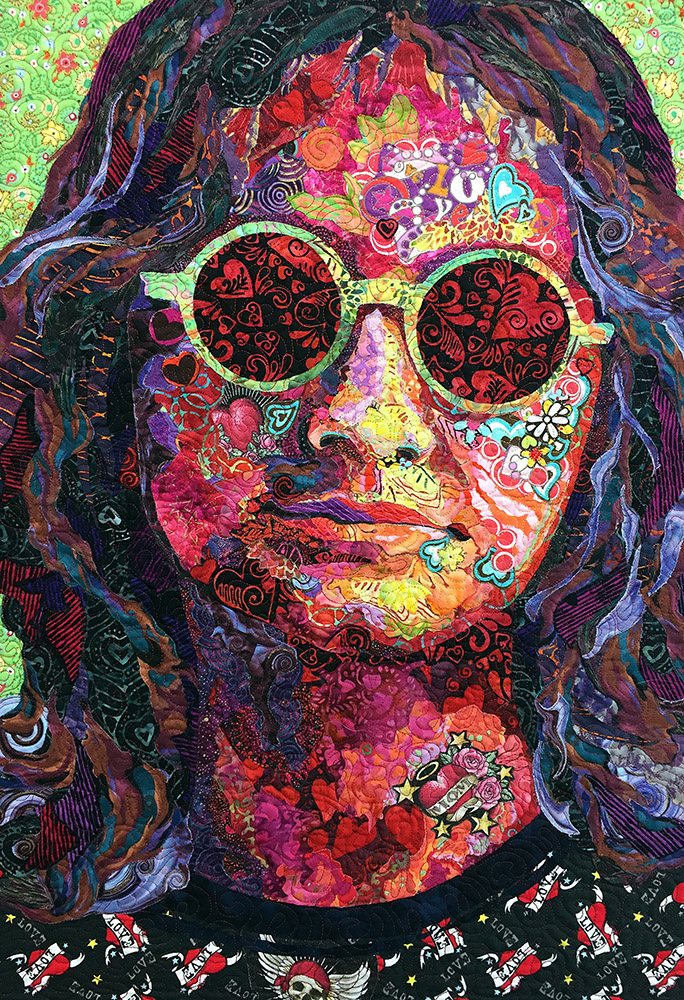
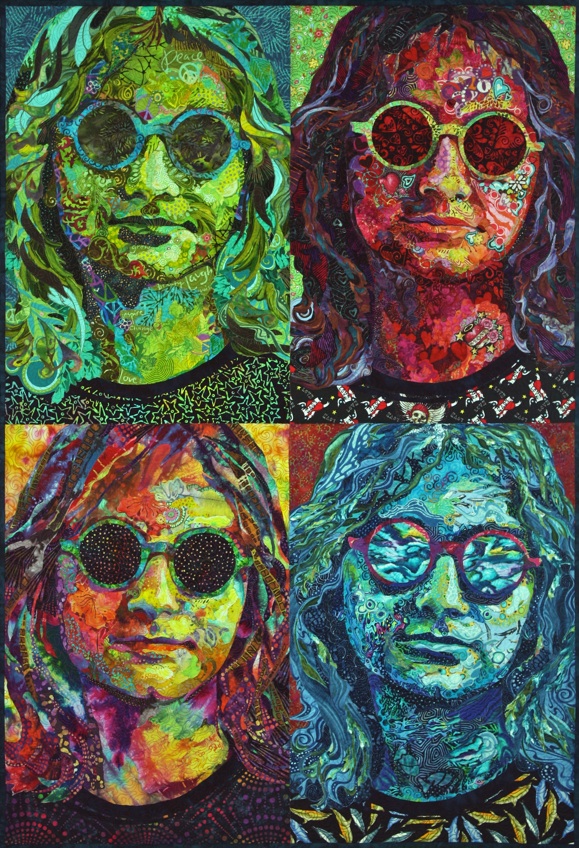
Can you ever bypass the M-SS? Yes, but it isn’t common. I have a couple of students who just seem to have the knack of flowing from one part of the quilt to the next without any great messiness or worry. I also have that experience once in a while. “Dixie Dingo Dreaming” was one such quilt.
This…
… flowed into this…
… and flowed into this…
… to become this.
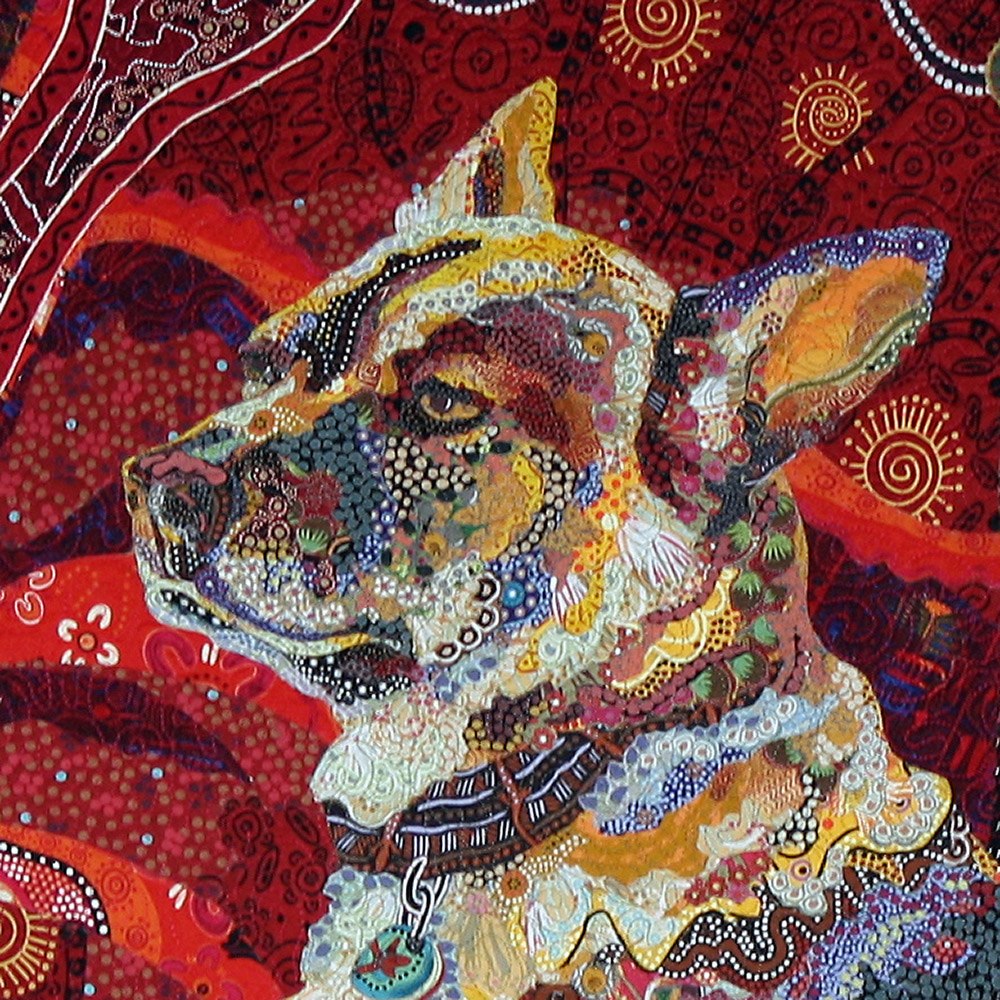
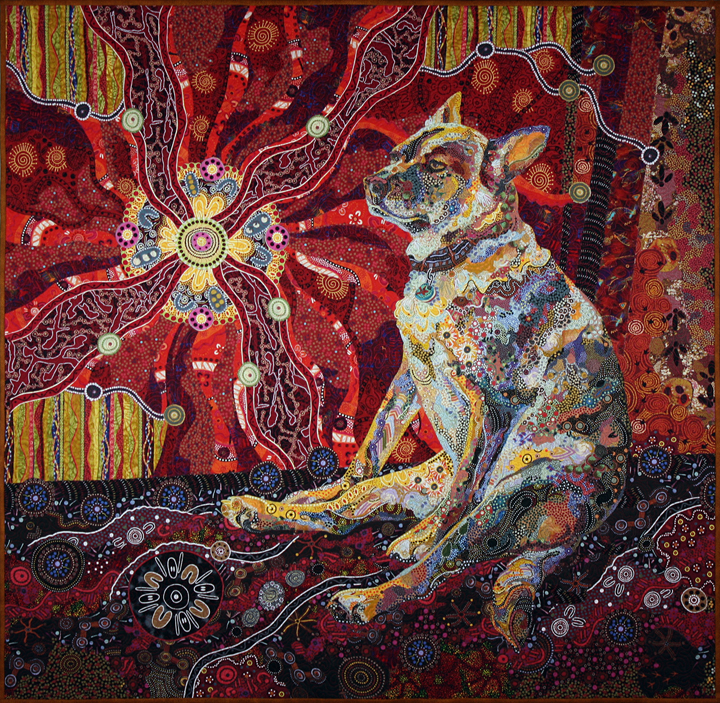
I think the lesson here is that the Messy-Scary Stage is a common phase in the way I do fabric collage, and it will probably be the same for you too. Sometimes the struggle with one image—or part of the image—is harder than another, but it always works out. You figure things out as you go through the process and as you work on the drafts. You figure out what color or what pattern in a fabric will work, how to hold your new scissors, and how best to cut out the fabric shapes. It’s all part of the process, and it’s how you learn.
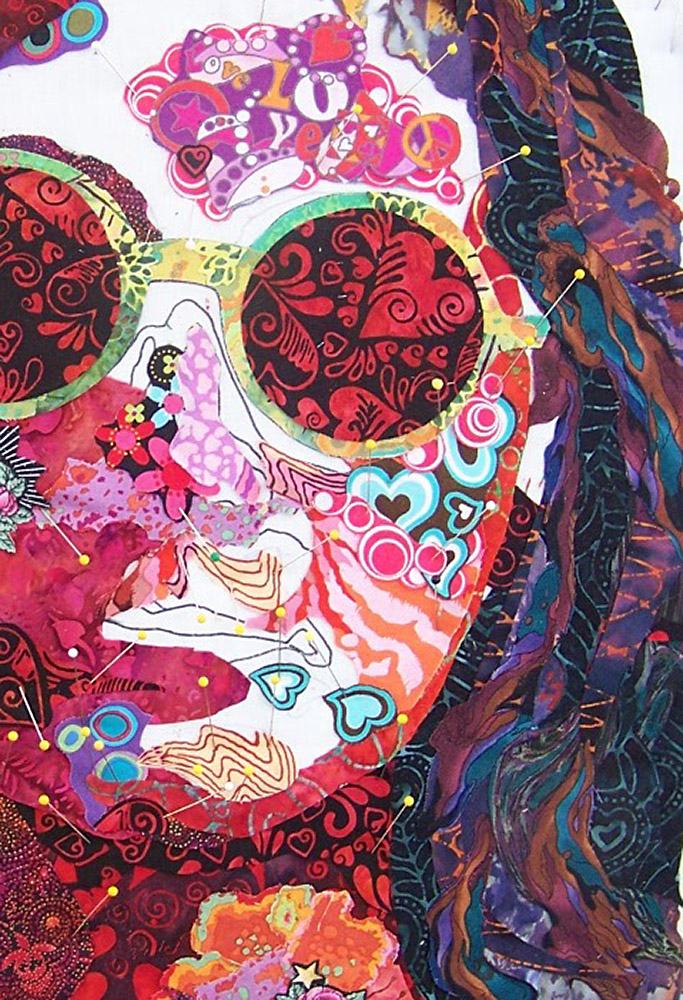
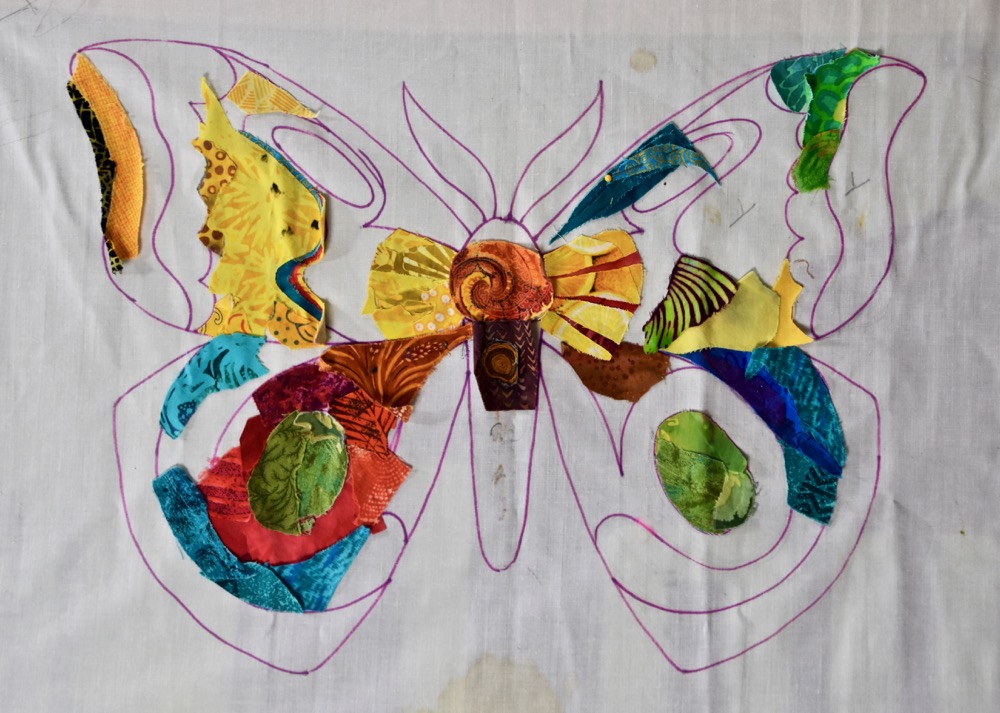
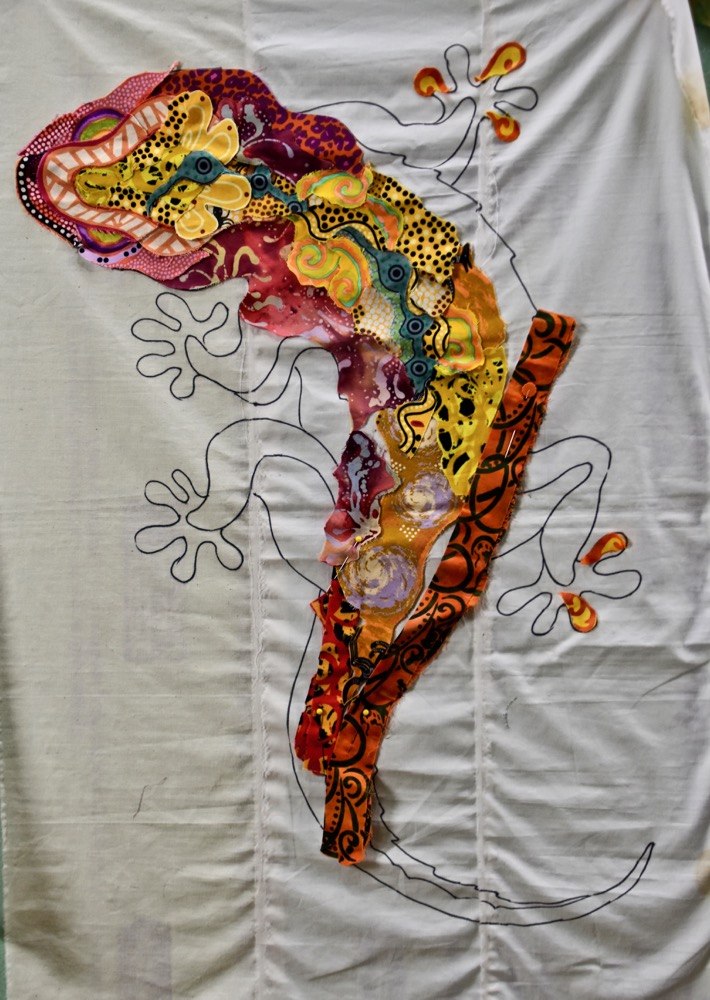
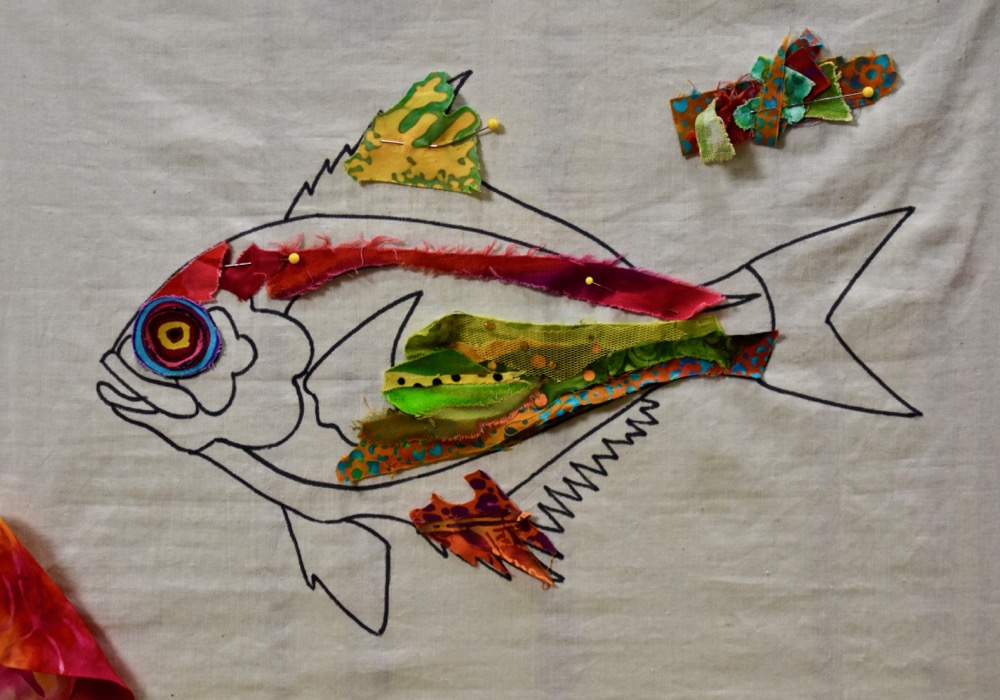
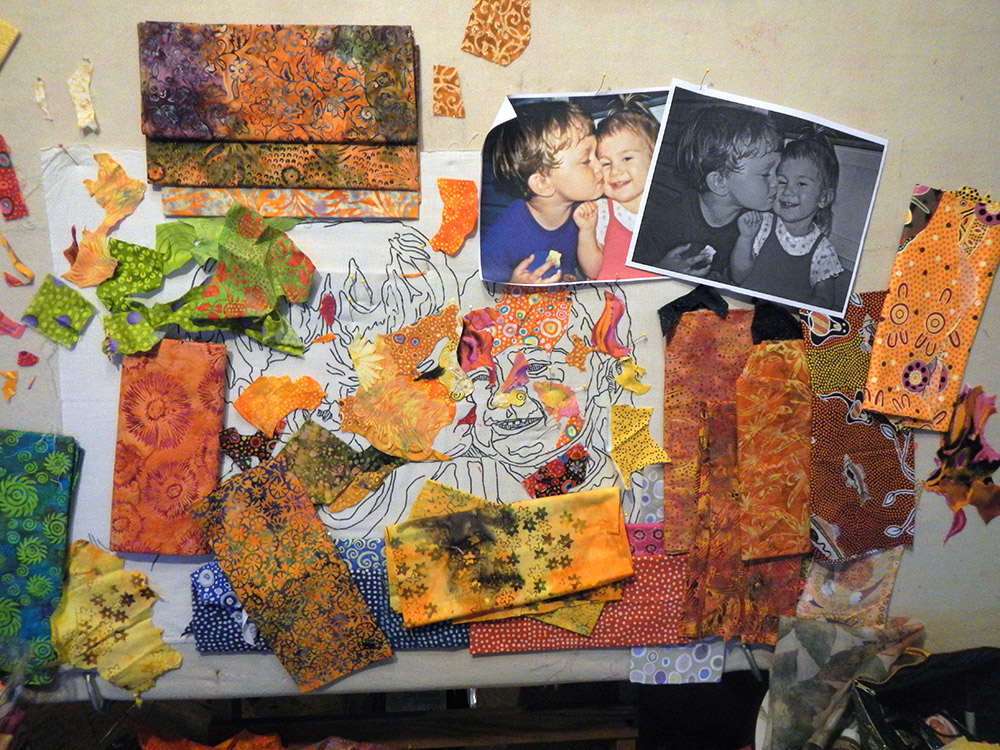
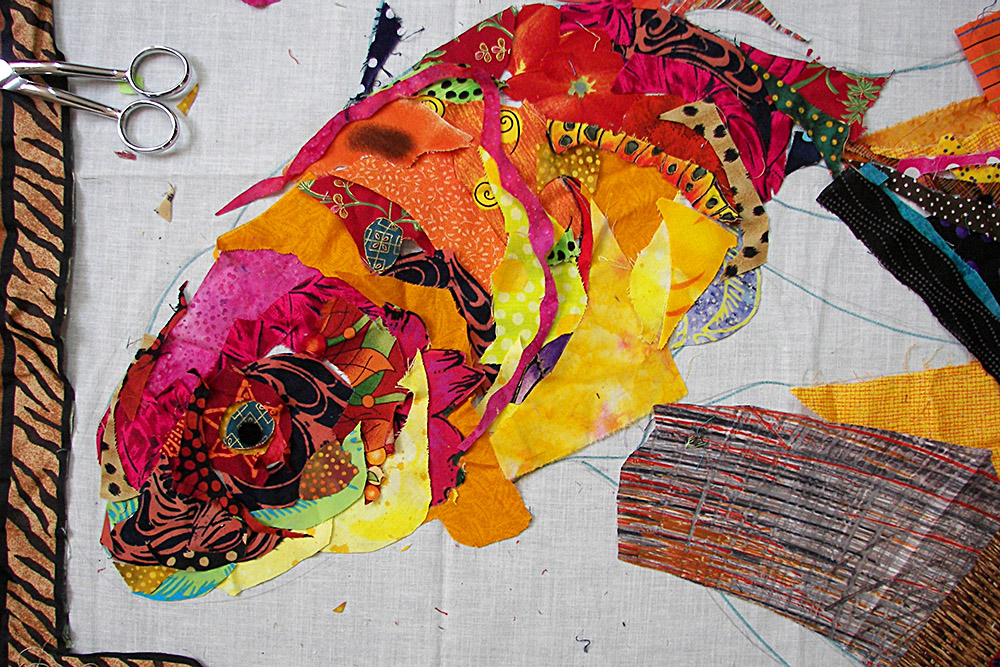
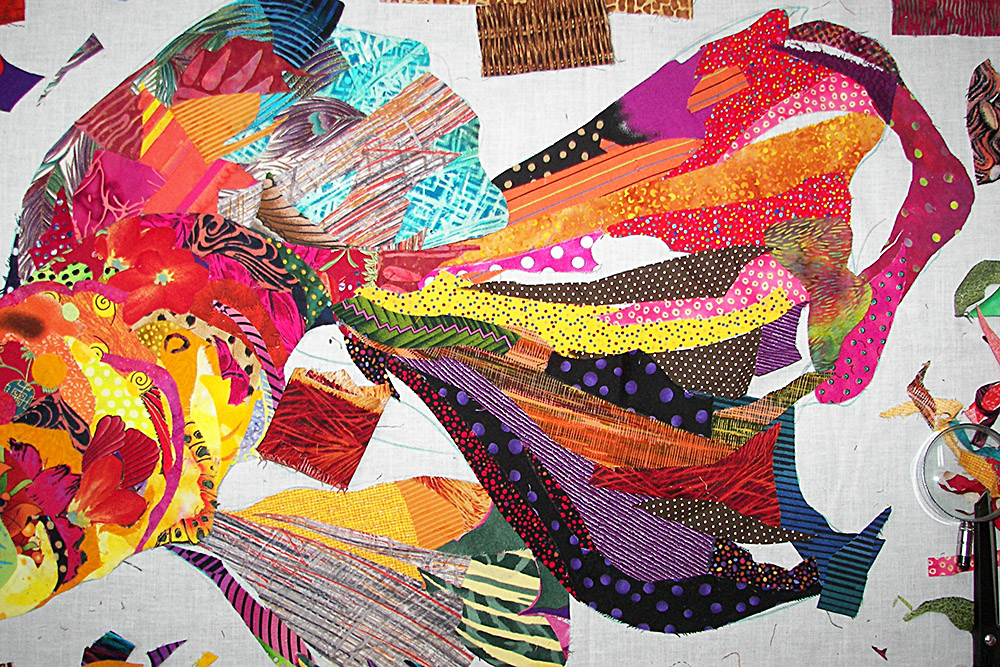
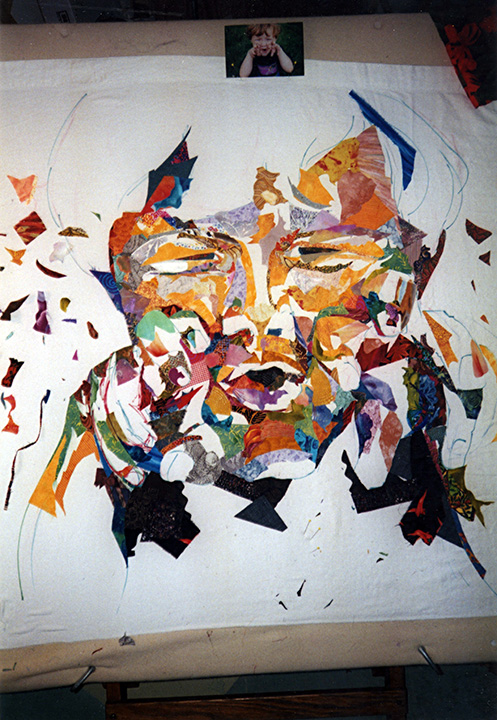
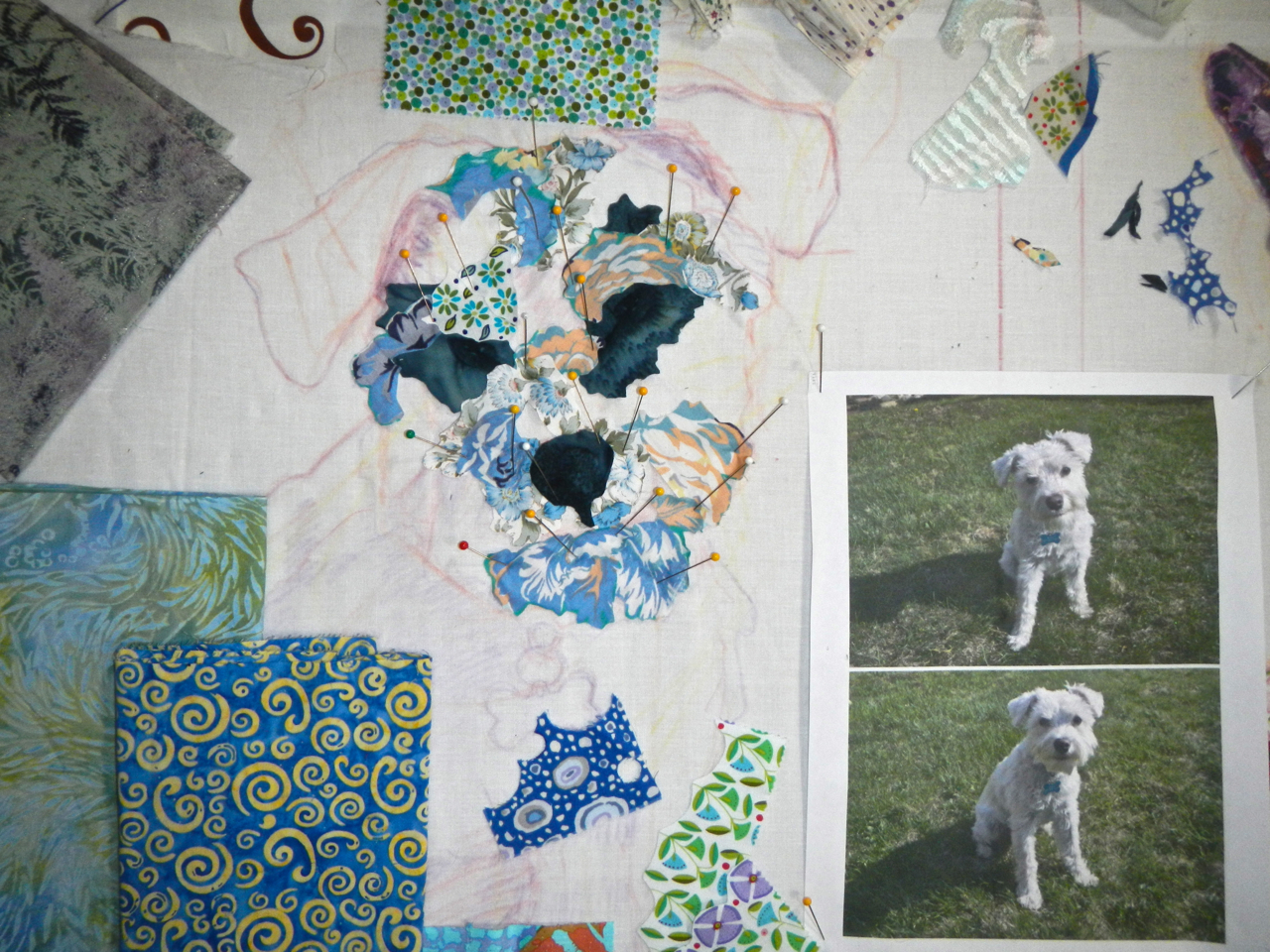
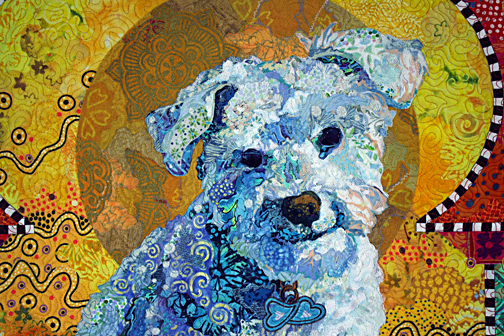
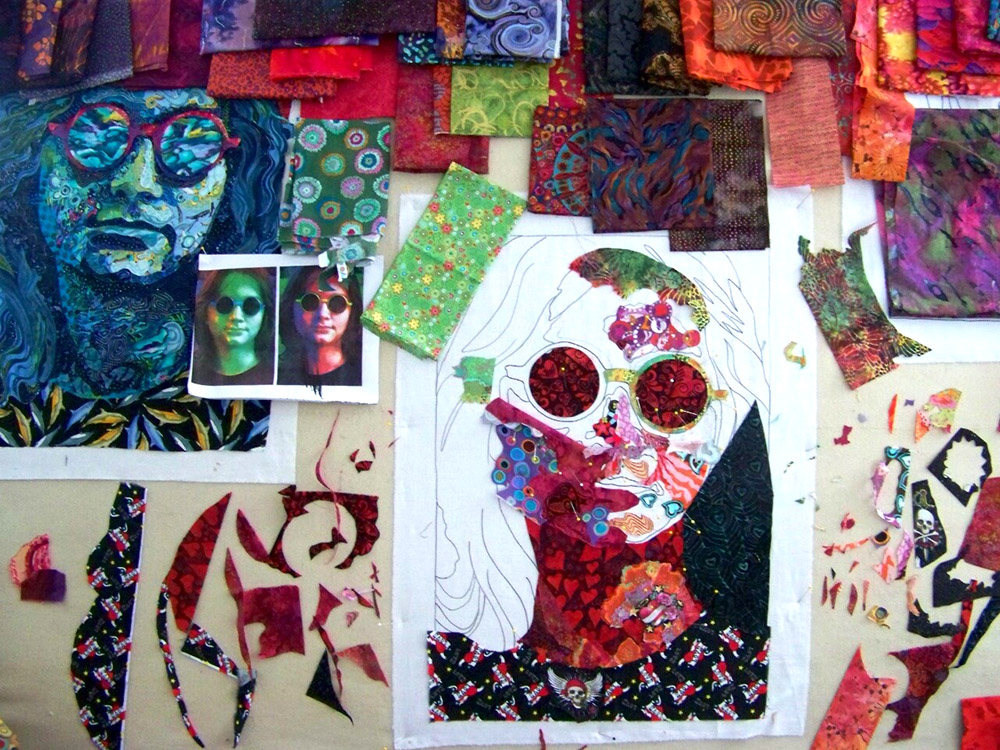
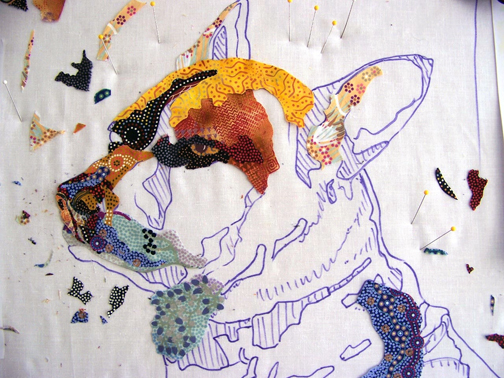
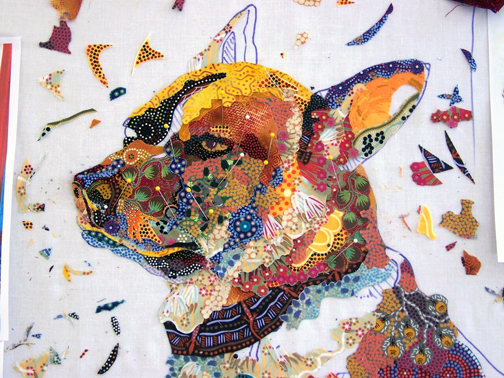
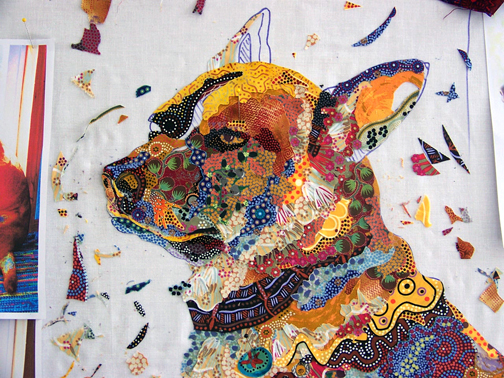
Thank you for the perfect timing of this blog as I have started a new piece. I am definitely at the M-SS stage as I interview values of fabric and colour choices. I hear your voice everyday and am confident that all will work out as it usually does.
Thank you for this today! As I just completed a landscape project that was on my bucket list for a long time, I look forward to picking up on a fabric collage that I am in the M-SS stage on. You are always so encouraging, thank you so much!
I love all your artworks my favorite is peace, love, and tie-dye and save the whales it looks so iconic. Thank you for all the inspiration and I have a fox collage I got scared and it is hanging on my idea wall waiting for me to come back and finish
Thanks for your wisdom, not only in the artistic process, but as a life lesson. l think that our lives go through periods of Messy Scary-Stages. We just have to trust ourselves, the process of change, and keep moving forward. We learn, we adjust, we see things in new ways, and things always seem to work out. Might have to use this post in a Sunday school lesson! 🙂
I’ve been in your class, seen this post before, read Bird by Bird by Anne Lamott, and still I have left my squirrel alone for so long I am very much in the messy scary stage. I have brought my squirrel out into a space where I can trip over it every time I enter the sewing studio and have begun working again. Thanks for this Throw Back Thursday’s perfect timing.